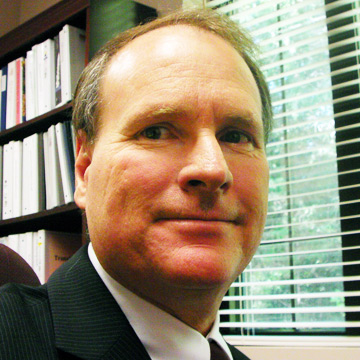Missis Dei
Following The Redemption Thread
This research project had two objectives. The first objective was to identify the impact of the pandemic on the ministries of the Michigan District to identify potential areas of District support. The second objective was to identify learning points that could help develop resources to strengthen ministries in advance of potential future threats. The collection of data for this study ended in the early days of the pandemic recovery. It could be justifiably argued that the nation has not yet entered the period of recovery. Therefore, the data and themes are early indicators rather than dependable way-points to fully understand the pandemic’s impact. Nonetheless, three themes appear to have the consistency that will withstand the test of time.
1. Relationships Matter
The church is strongest when the church is relational. God works through His people to strengthen, comfort, and encourage the members of His body. While there is a place for an evangelistic proclamation in a large gathering, much of the church’s mission work happens one on one as God’s people interact with those who still live in the world. Social distancing, the suspension of public gatherings, and the prohibition on pastoral care in the institutional setting have dramatically impacted the vitality of the congregation and the emotional well-being of God’s people.
We can celebrate the hard work, the long hours, and the sacrifices made by congregational members, ministry staff, pastors, teachers, and administrators as they scrambled to develop new channels of communication so that God’s work through the church and school could continue. At the same time, it must be acknowledged that the relational aspects of technology-mediated interactions are not sufficient for the vibrant ministry. The steady decline of online worship in favor of in-person worship supports this claim. The number of workers and members that expressed an overwhelming sense of isolation and loneliness during the pandemic support the claim. Finally, the data collected from outside sources[1] found that at the height of the pandemic, the number of worshippers who participated in online worship decreased by 85% within the first 18 minutes. Further research and exploration may determine the factors that contribute to social disconnectedness from the technology-mediated community.
2. The Rise of Consumerism
Most congregations in the Michigan district suspended in-person worship for an average of four weeks, sometime during March and April. Many congregations suspended worship for several months, starting in the second or third week of March. The action was not taken lightly. It was viewed as an acceptable way to honor God and keep others safe and healthy. However, the unintended consequence of online worship may be a decrease in worship attendance and volunteerism among congregational membership. As of April 2021, most of the participating congregations were experiencing at least a 30% decline in their in-person worship from January 2020. Almost half of the congregations that participated in the survey had less than 30% of their former number of worshippers in their Sunday services. While this study did not include a survey of individuals who are only attending online services, it seems a reasonable assumption that many continue to worship online because of its convenience and variety of choices. The number of respondents was too low to identify with a high level of certainty the co-variables that might indicate a strong correlation between suspending services and low in-person attendance figures. The survey had only 24 participating congregations that did not suspend in-person worship. Most of these congregations were in rural contexts. Many of the 24 congregations from rural areas experienced a similar decrease in their worship attendance to rural congregations that had suspended in-person worship. Unfortunately, the data collected contained too many environmental factors to conduct an accurate regression analysis.
3. Divisiveness
A strong thread of concern shared in the report is divisiveness. It has been said that a crisis will bring a family closer together or drive them apart. Such seems to be the case with the pandemic. Several workers expressed exhaustion from dealing with divisive individuals who have attempted to attribute political agendas to congregational decisions. While the thread is real and troubling, the more disturbing reality is the divisive language that the participants use to refer to others. For example, some participants spoke of the “radical right,” and others referred to “woke-ism of the left.” Most troubling was the minority of the participants who expressed the belief that suspending in-person worship was compromising the faith to “please men.” The pandemic has further eroded trust between ministries and between ministries and the District. The issue of divisiveness is at its roots an attack on the body of Christ and a deterrent to healthy congregational life and effective outreach. The District can assist congregations and pastors as they seek to address political divisions within the church by providing resources. Too often, the pastor’s words are marginalized by those who assign a political agenda to his message. Words spoken by outside “experts” might help diffuse the situation. There is a need to create a proactive, affirming culture within our congregations. On a different level, there is a need for theological discussion among professional church workers that speaks plainly about the sin of divisive language and the reality of our freedom in the gospel.
4. Theological Foundations for “Online Ministry.”
The lack of theological discussion and study related to “online ministry” or “online worship” has contributed to the divisive activity of the pandemic. As noted from the worker responses, some pastors believe a worship gathering is only valid when people and pastor physically gather in a shared space around the Word and Sacraments. Other pastors believe that a technology-mediated community is as valid as a physically gathered community. These pastors assert that the elevation of in-person worship over online worship is sacerdotalism. This second group of pastors often argue that in-home worship is the church of the future. The largest segment of our pastors have viewed online worship as a pragmatic decision and do not attribute theological intent with choice. Like many issues in our church, we believe that ignoring the differences will diminish their power to divide our churches. In reality, it is the lack of discussion that empowers the two extremes.
5. Finances.
Finances were rarely mentioned in the survey responses. The most common response was that of surprise that God was providing the needed resources. We certainly can give thanks to God; when the pandemic was at its most confusing, most congregations experienced a spike in giving. However, the fact that congregations generally experienced a greater than 15% decline in their offerings through the study period cannot be ignored. Perhaps finances were not perceived to be a big issue because congregations had a positive cash flow, mainly due to decreased expenses. It is likely that, as a congregational ministry begins to ramp up and offerings remain at their current level, many congregations will find themselves in a cash flow crunch by late fall. Congregations are accustomed to the fall crunch in offerings and count on the Christmas season to buoy the congregation through most of the winter. However, last year the offerings did not show a noticeable increase for most ministries. With a significantly greater number of ministries in the at-risk category, the District should review or develop resources to assist congregations facing closure. Strategies to reduce expenses with minimal impact on the mission activity of the congregation could be the difference between a ministry remaining open or a ministry closing.
6. Mission Opportunities.
Most of the participants that expressed optimism for mission opportunities in the post-pandemic world believed that the opportunities would occur through online ministry or online activity. However, as mentioned earlier, our faith’s strength has historically been in our relationships and person-to-person interactions. If congregations go down the path of online ministry, research needs to be conducted to determine if healthy relationships can be formed, sustain, and grow through technology-mediated social interactions. Models of successful online or in-home ministries need to be developed or identified.
A second option for mission would be the use of an asset-mapping process to determine how the local congregation could leverage its strength—relational ministry—to extend its mission reach in the community it serves. For example, a congregation could fill the void of safe in-person gatherings by hosting small gatherings around a shared interest. A congregation could provide study pods and mentors for small groups of students to interact socially engaged in online learning.
7. Breaking Institutional Barriers.
One of the greatest frustrations expressed by pastors in the survey was their frustration at not providing pastoral care to members in care facilities and hospitals. Institutions of health originated within the church. Valid studies have demonstrated that spiritual care positively impacts health care treatments. It was tragic that many people of faith perished without a pastoral visit due to policies developed contrary to those research studies. It would be easy to point the finger at the government or the institutions themselves. However, much of the blame might lie with our clergy who have neglected to form a collaborative partnership with hospitals and health care providers. The church historically has had many fruitful opportunities to share the Gospel through the health care system. In smaller locations, rebuilding the connection between patients’ spiritual and physical care might be simply a matter of developing a relationship with the hospital administrator and offering to serve as a volunteer chaplain. In larger, corporate hospitals, it may require more formal work to identify and mitigate their concerns. We might gain credibility with larger institutions by developing a version of CPE, which has been abbreviated to focus on patient privacy issues, working in the hospital environment, and contagion mitigation procedures.
[1] 2021, The New Sunday Morning, The Barna Group, https://www.barna.com/research/new-sunday-morning/

About the Author
Todd Jones,
Rev. Dr. Todd Jones serves as an assistant to the President of the Michigan district for the development of continuing education and the facilitation of new mission starts.


